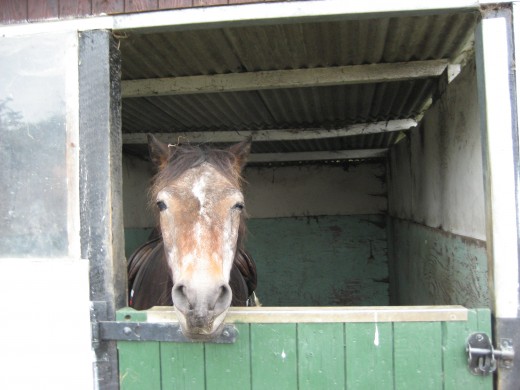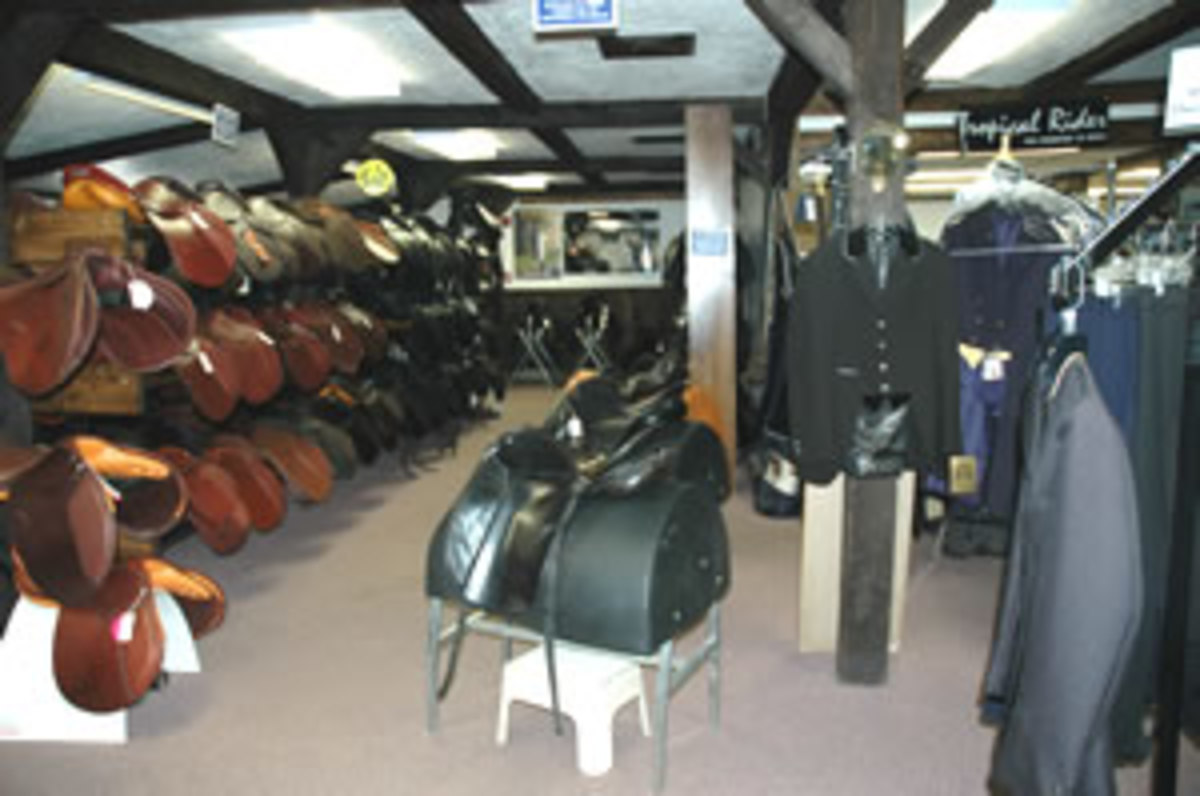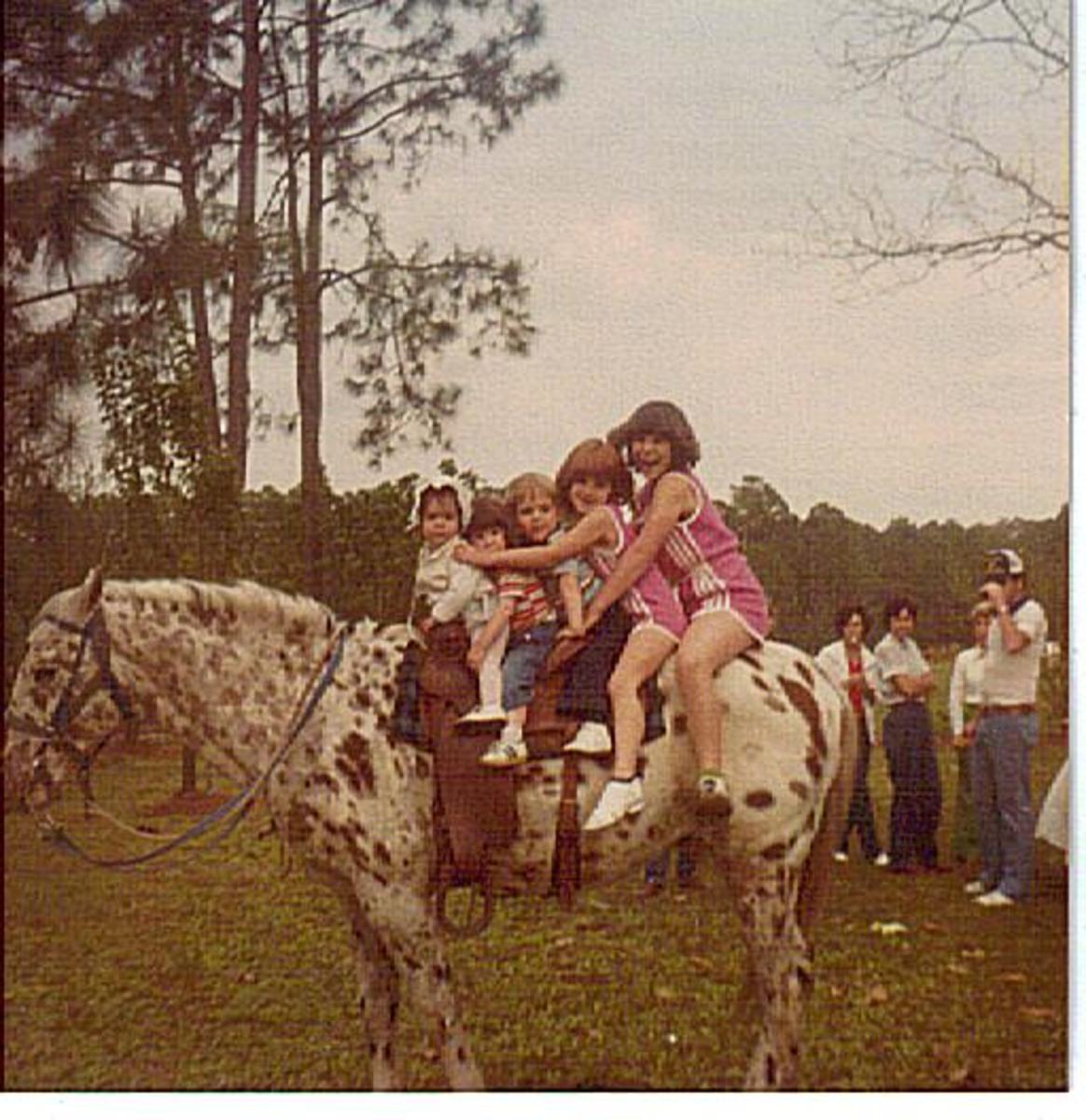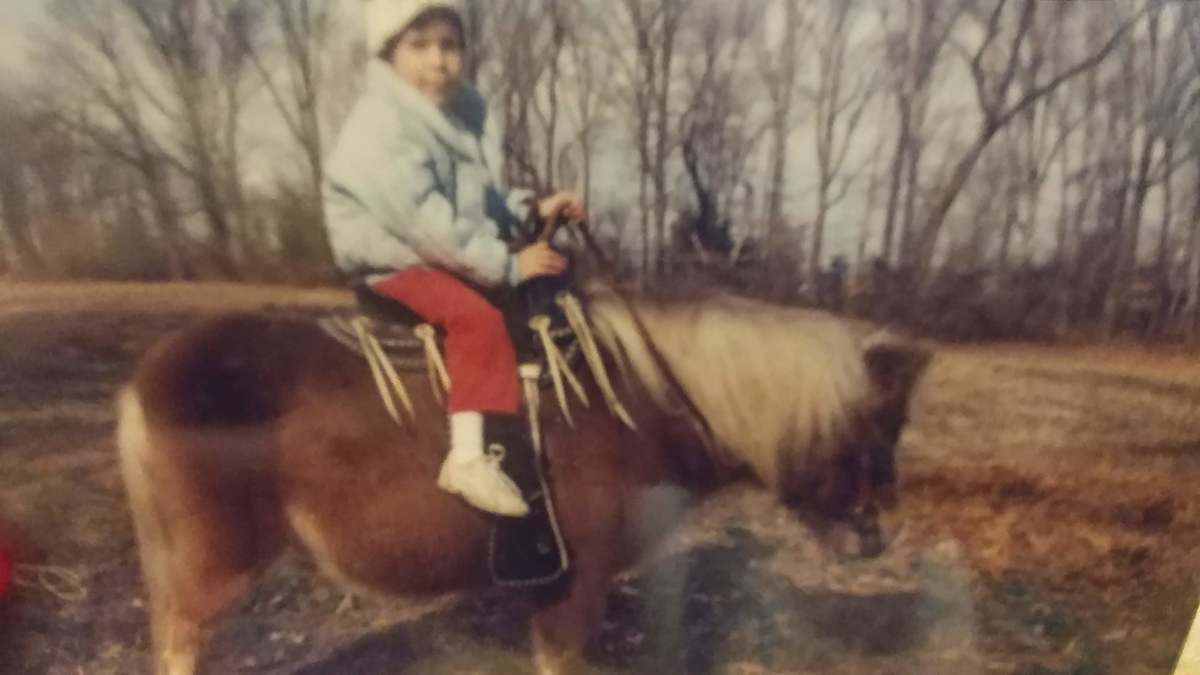Keeping Your Barn Safe - Tips To Prevent Injury In Both Horses And Humans

Safety In The Barn
Horse riders talk a lot about helmets and the importance of being safe when riding, but what about safety around the barn?
It's important that a barn or stable be organized with the safety of both humans and equines in mind. Understanding the basic principles of safety and what can be done takes time, but it is worth it in the long run.
Fire Safety
Fire safety is so important that I've devoted an entire hub to it, which can be found here.
Keeping fire extinguishers in good order and having an evacuation plan are the bare minimums. Never allow anyone to smoke in or around the barn, including indoor arenas and viewing areas. I recommend banning smoking within fifty feet of all barn buildings.
If possible, store hay and manure in separate buildings, away from the main barn in which horses are being kept.
Insect Control
Flies annoy horses. Stinging insects are highly dangerous. I am alive today because I was wearing a helmet the day my horse got stung by a wasp, bucked me off and kicked me in the head. My trainer was seriously hurt when the 16.3 Warmblood she was leading to his field was attacked by yellow jackets. I've seen twenty plus year old beginner horses throw their riders because of stinging insects.
Any and all wasp, hornet or yellow jacket nests in the immediate environs of the barn should be removed.
Fly control is also important for safety - a horse that is irritated by flies may inadvertently kick or bite a human that gets in between it and the annoyance, or may become distracted when ridden, causing an accident. Use a good fly repellent when riding in summer, on both yourself and the horse. Be sure to desensitize a nervous horse to fly spray. Horse flies have also been known to carry Lyme disease. Horses that are particularly sensitive to flies may need to be ridden in a fly bonnet that keeps insects away from the ears, or a fly mask to protect his eyes...or even both.
Other control measures include oral fly control products designed to prevent flies from breeding in manure and fly predators, which are small wasps (they do not sting humans or animals), which should be released in the area of the manure heap. They will go after the fly larvae.
Another thing worth considering is encouraging barn swallows to nest in and around your barn. Barn swallows love to eat horse flies and are attractive birds to have around, although they have been known to 'buzz' horses in the arena.
Keep Aisles Clear
One important element of barn safety is to always keep aisles and other areas where horses are moved clear of debris. Put grooming and mucking out equipment away once you are done with it. Hang up rugs, bridles and halters.
Avoid parking wheelbarrows in the aisle for any longer than is absolutely necessary. Preferably, they should not be left unattended at all outside of a proper parking area. Do not leave wheelbarrows upright...tip them against the wall to prevent standing water accumulating, which can attract mosquitos. The barn aisle is also not a good place to sit around and gossip. Folding chairs can become a trip hazard very easily.
Unused cross ties should be looped up high enough that there is no risk of anyone's leg being caught in them and should always be on a breakaway (two strands of baling twine makes a perfect breakaway tie).
Watch Small Children
Never let young children wander around a barn unsupervised. Most 8-9 year olds can handle it, but younger than that should be with an adult. Toddlers should probably also be on a leash. (This also goes for going in the stable area at horse shoes - some bad accidents have happened with loose toddlers and strange horses, including those oh-so-cute miniature ponies).
Children should be taught never to walk behind a horse and not to pet strange horses - they might bite. They should not be allowed to feed horses treats unsupervised and should be taught the correct method to do so. Do not allow children to run in barn aisles. Remote controlled cars, robots and other such 'self-moving' toys should not be allowed in barns or near arenas.
Watch Or Restrain Dogs
Barn dogs should be kept, as much as possible, out of arenas. They should never be allowed to run or herd horses. Especially not horses that are being ridden. (It is not funny, nor is it 'expected behavior' from a herding dog).
Dogs that are not used to being around a barn must be kept on a leash or otherwise restrained at all times. Do not allow visitors to let their dogs run loose. A horse can do a lot of damage to a dog if it decides to kick. Many dogs will chase a horse if they have not been trained not to do so, and they may run a horse into fencing or otherwise cause a wreck.
Padlock Paddock Gates
Padlock the gates of any fields or paddocks that contain horses. On both ends. Horses have been killed before when people have gone into the field to pet them and left the gate open. If you have a pedestrian right of way that runs through your paddock, you need to provide stiles (this is rare in the US but not at all uncommon in Europe).
Post signs warning people not to feed or touch horses. Keep out and no trespassing signs are also a good idea unless there is a right of way running across your land.
Also padlock the main gate to the property if there is one - but make sure to provide a key to the fire department. Never padlock stalls.
Have First Aid Kits Available
Have both human and equine first aid kids readily available. If you have a freezer on site, it's a good idea to provide at least equine ice packs. (Equine ice packs will work on humans in a pinch, whilst human-sized ones are of limited utility to a horse).
Make sure that first aid kits are fully stocked at all times and clearly marked. A human first aid kit should be located in a convenient position (for large barns, consider having more than one) and marked with a red cross. Some people also like to mark animal first aid kits with a blue cross.
If you have barn dogs or cats, then you may want to put together a first aid kit for them as well.
Secure Dangerous Items
Keep equine medications, pet medications and cleaning supplies out of the reach of children and clearly marked.
The same goes for weapons or anything that might be usable as a weapon. Most people around barns carry pocket knifes - make sure these are either on the person or in a secure location at all times. Never leave knifes, farriery rasps, tooth rasps or hypodermic needles where children can get at them. If you keep a gun on the premises, secure it and remember there is no such thing as an unloaded or safe gun.
No Alcohol or Drugs
Do not ride or handle horses while drunk. Some barns prefer to ban alcohol from the premises altogether.
Bear in mind that riding while drunk is a DUI/DWI in many states, not to mention stupid and dangerous. (Just because you, or somebody you know, have got away with it in the past does not make it safe). Enjoy your stirrup cup after you ride - and then only if you don't have to drive home.
Illegal drugs, including marijuana, also do not mix well with safe horse riding or handling. Being stoned slows reaction times and reduces awareness.
Dress Appropriately
Shorts are generally not good barn wear. Flip flops are definitely not. Always wear closed toed shoes with a solid sole. Rubber boots are recommended for any kind of wet, muddy, or cold conditions. Female visitors should be advised that high heels are not a good idea. Always ride in long pants and boots unless riding bareback. (It IS okay to wear shorts if riding bareback on a hot day or swimming with horses). Long sleeves are recommended unless it's just too hot to stand them.
Helmets should be worn when riding and also when handling strange horses or ones known to be difficult. If working with particularly dangerous horses or doing cross country, consider a protective vest.
Do not wear necklaces or dangly earrings when riding or handling horses as both have been known to cause injury.
Practice Proper Barn Maintenance
Inspect stalls regularly for sharp edges and other damage. Patch holes in the aisle or stall floor before somebody trips over them, not after.
Inspect all electrical equipment regularly. Unplug appliances that are not in use and never use a free standing space heater or use a space heater in a stall or the feed room.
Sweep aisles regularly and make sure that any wash stalls drain properly. Check all tack and equipment, including halters (most especially breakaway straps) regularly and keep it clean.
A Few More Common Sense Rules
1. Avoid walking behind a horse. If you must do so, try to be at least six feet away. If that is not possible, walk as close to the horse as possible and keep a hand on its rump at all times. Talk to it to make sure it knows you are there.
2. Do not walk past a horse that is in cross-ties. Also do not leave a horse unattended in cross-ties for more than a minute or so. Always use a breakaway strap or a couple of strands of bailing twine on both cross-ties.
3. Do not enter wash stall areas while somebody else is bathing a horse.
4. Always coil up hoses once you are done with them. Try not to drag a hose past a horse that is being ridden or handled. The most bombproof horse may randomly mistake a hose for a snake.
5. Don't run a loose horse back to the barn.
6. Don't walk a horse with a saddle on it but no girth fastened, or use your poor horse as a saddle rack. It's fine to leave a saddle on for periods of less than an hour with the girth loose, but never with the girth tightened. If you have to switch girths, remove the saddle. If using a back cinch, always unfasten the back cinch before the front cinch - doing it the other way around can end up with the saddle dangling under the horse's belly.
7. Never wrap a lead rope or lunge line around your hand. If using a crop, do not use the wrist strap (Some people prefer to actually cut the wrist strap off and more and more crops are being designed without them).
8. Never tie a horse without some kind of breakaway, either a breakaway halter, a breakaway strap between the lead rein and the ring, or both. The exception to this rule is if you are in a wilderness area or other situation in which a horse getting loose would be particularly dangerous.
Did I miss any?



